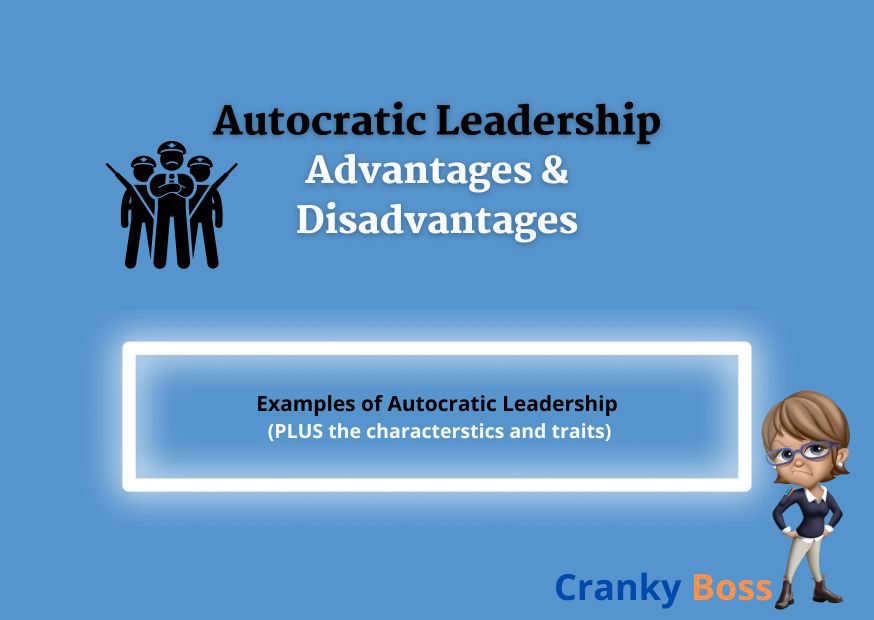Tendering your resignation from a job is an important step in your career. Whether you’re moving to a new opportunity, seeking a change, or have personal reasons, resigning should be done professionally and courteously. What does it mean to tender a resignation? “Tendering a resignation” means formally notifying your employer that you intend to leaveContinue reading “Tendering a Resignation”
Category Archives: Business Talk
Advantages and Disadvantages of Autocratic Leadership
Leadership styles play a crucial role in shaping organizational culture and driving team performance. Among the various leadership styles, autocratic leadership stands out for its authoritative approach and centralized decision-making. Let’s take a look at its defining characteristics, advantages, and disadvantages. By understanding the dynamics of autocratic leadership, leaders and managers can make informed decisionsContinue reading “Advantages and Disadvantages of Autocratic Leadership”
How to protect your energy from toxic co-workers
Working in an office can be challenging, especially when dealing with toxic co-workers. These are the people who drain your energy, bring negativity into your workspace, and make your job harder than it needs to be. But fear not! There are ways to protect yourself from their harmful influence. What are some common characteristics ofContinue reading “How to protect your energy from toxic co-workers”
Dead Fish Handshake
A handshake is a common way people greet each other. It’s like saying hello with your hand. But have you ever heard of a “dead fish handshake”? Let’s learn more about it. What is a Dead Fish Handshake? A dead fish handshake is a term used to describe a handshake that feels weak and limp.Continue reading “Dead Fish Handshake”
Backhanded Apology
In our daily interactions, apologies serve as crucial tools for resolving conflicts and repairing relationships. However, not all apologies are created equal. Some apologies come with a hidden sting, known as a backhanded apology. But what constitutes a backhanded apology? Let’s talk about what it is and its impact in various contexts such as theContinue reading “Backhanded Apology “
Cursing in the Workplace
Communication plays a pivotal role in the workplace environment. However, sometimes, certain words slip through our lips that may not be suitable for professional settings. Cursing or using profanity in the workplace is a topic that often raises eyebrows and stirs debate. Let’s take a look at what cursing is and understand its implications. WeContinue reading “Cursing in the Workplace”
Funny Farewell Messages for Work Colleagues
Saying goodbye to a colleague can be a mix of emotions. You’re happy for them as they embark on a new journey, but sad to see them leave your workplace. However, it’s also a time to lighten the mood and share some laughter with funny farewell messages. When a colleague tenders their resignation and leaves,Continue reading “Funny Farewell Messages for Work Colleagues”
Backhanded Compliment Examples
Effective communication is paramount in business and the workplace. Often, compliments are exchanged as a form of acknowledgment and encouragement. However, not all compliments are created equal. Some can carry hidden meanings or subtle jabs, known as backhanded compliments. Similar to insincere apologies known as backhanded apologies. Understanding these remarks is essential for fostering a positiveContinue reading “Backhanded Compliment Examples”
Jealous Female Co-Workers Signs
Jealousy among co-workers can happen in any workplace. Sometimes, you might notice that a female co-worker is acting differently towards you. She might be jealous, but it’s not always easy to tell. In the context of the workplace, co-workers may experience jealousy towards their colleagues for various reasons, such as perceived success, recognition, or relationshipsContinue reading “Jealous Female Co-Workers Signs”
Phrases to Shut Down Gaslighting at Work
Before diving into effective strategies to combat gaslighting in the workplace, it’s crucial to understand what gaslighting entails. Understanding the dynamics of gaslighting is essential for identifying and addressing it effectively in professional settings. What is Gaslighting? Gaslighting is a form of manipulation where someone tries to make another person doubt their own thoughts, feelings, orContinue reading “Phrases to Shut Down Gaslighting at Work”









